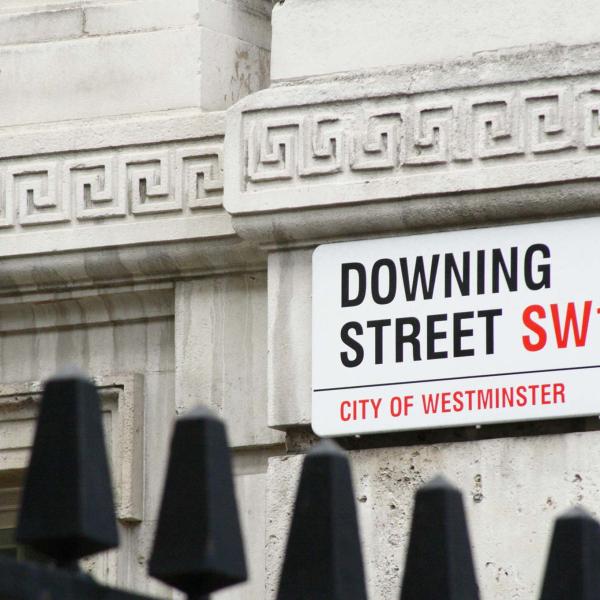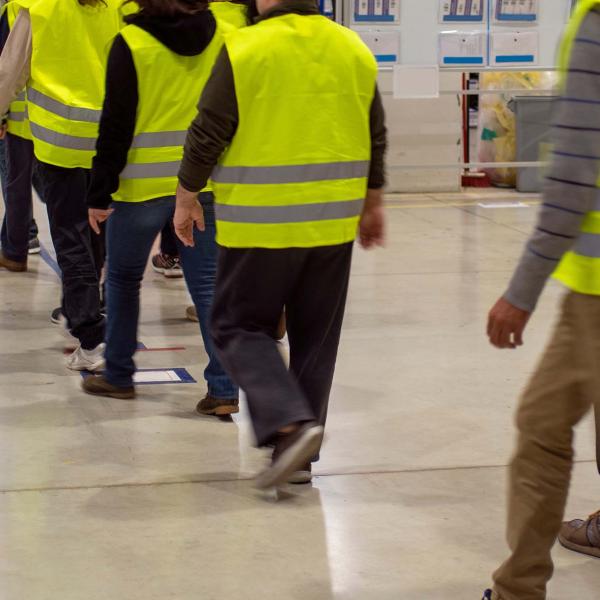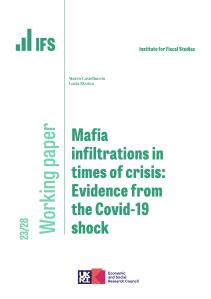One of the largest changes in the labour market in recent years has been the growth in the number of people working for their own businesses rather than as employees. The Labour Force Survey – the major household survey collected by the ONS – shows that the self-employed (those running unincorporated businesses) make up 13% of UK workforce, up from 12% before the financial crisis. Company owner-managers (those running incorporated businesses) are 2% of workforce and their numbers have been growing faster than employment since the early 1990s.
Despite the growing importance of people working for their own businesses, relatively little has been known about the incomes and business activities of this group. New IFS research is using government tax records to fill in some of the gaps. The key benefits of tax record data are that we can, for the first time, observe detailed information about the incomes and business costs of business owners and track how individuals’ incomes have evolved over time.
One drawback of tax records data is that it is known that some self-employed people under-report their incomes (or over-report their costs) in order to evade taxes. Previous IFS work has studied the prevalence of noncompliance using data from HMRC’s random audit programme. It found, for example, that 60% of the self-employed underreport the tax due, although most non-compliant taxpayers owe less than £1,000. Evasion will, therefore, affect incomes as measured in tax data, but we do not think it plausible that evasion can explain the substantial changes in income that we observe since 2007-08. In fact, HMRC estimates that the proportion of business taxpayers underreporting income has fallen significantly since 2005–06.
The key findings from our research so far are:
The population of self-employed sole traders grew by 25% between 2007–08 and 2015–16 but aggregate turnover for this group (in real terms) fell across the same period. In 2015-16, there were 4.1 million sole traders (including those who also had other employment income but not including those working for partnerships), up from 3.3 million in 2007-08. Despite the growth in numbers, aggregate turnover (which measures total sales, not just profits) for this group fell by 19% over the same period.
Average (mean) profits fell dramatically by 23% after adjusting for inflation between 2007–08 and 2011–12 (from £15,400 to £11,900), driven by falls for those sole-traders that stayed in business. For comparison, real mean earnings for employees fell by 6% over the same period. The falls in sole traders’ profits are largely explained by large falls (16%) in profits for those who were already in business in 2007-08 and remained in business in 2011–12. Although there have been many new entrants who have low profits, entrants always tend to start with lower profits; a change in the profitability of entrants does not explain the dramatic falls in mean profits in the aftermath of the recession. There has been only a very modest recovery in average sole-trader profits since 2011–12, rising by 2% between then and 2015–16.
Falls in average profits cannot be explained by a change in the propensity to take on self-employment alongside employment. In 2015-16, 25% of sole-traders also have some employment income; 18% have more employment income than self-employment income. These figures have changed very little in the last decade.
There are more sole traders reporting very low profits. 14% of sole traders (around 550,000 people) report very low profits of between £0 and £2,000 per year in 2015–16, up from 12% in 2003–04. Over half of this group have another job (53%), 28% are in their first year of self employment and only 7% undertake investment. This is not proof of, but is consistent with, increased numbers of people working in the “gig economy” or running a “kitchen table business”, with relatively few hours of work and little capital invested.
The proportion of sole traders with profits of at least £40,000 (in 2015-16 prices) has halved from 8% in 2003-04 to 4% in 2015–16. This is an absolute fall of 90,000 people despite the increase in the overall number of sole traders. Two thirds of those with profits of at least £40,000 work in four industries: Construction, medicine, finance and business services. The median turnover of this group has fallen 28% (£32,000) since 2003–04, and the proportion investing and employing others has fallen substantially too. Part of these patterns may be driven by high earning sole-traders incorporating (they face a tax incentive to do this). However, the majority of the change is driven by those individuals who continue in self-employment but see large income falls. An important question is to what extent this reflects a fall in productivity. These issues are the subject of ongoing research.
The company owner-manager population has increased 7 fold since 2007–08 and has seen an 18% fall in mean profits but an increase in aggregate profits. In 2014–15 there were 310,000 single director /single owner companies, up from 44,000 in 2007-08. On average, owner-managers have profits that are more than twice as high as sole-traders. Average profits for owner-managers have fallen 18% since 2007-08. Taking sole traders and owner-managers together, average profits have fallen by 19%.
Only 45% of owner-managers (in 2014–15) and 25% of sole traders (in 2015–16) invested in capital – down from 70% and 60% respectively in the year before the financial crisis. The proportion of business owners using capital allowances – a measure of investment – has fallen substantially and, in all periods, often reflects small investments
Notes
The above results are based on analysis of the self-assessment records of sole-traders (self-employed individuals, not including partnerships) and the self-assessment and corporation tax records of companies owned and managed by a single individual (i.e. excluding companies where there are multiple shareholders or directors). Future work will consider more complex structures. This work contains statistical data from HMRC which is Crown Copyright. The research datasets used may not exactly reproduce HMRC aggregates. The use of HMRC statistical data in this work does not imply the endorsement of HMRC in relation to the interpretation or analysis of the information.
References
Chapter 7 of the 2017 IFS Green Budget discusses what we know about the self-employed and company owner-managers from survey data and the issues that arise because these groups receive lower tax rates than employees.
This IFS Briefing note summarises research that uses information from HMRC’s random audit programme to estimate which types of people are more likely to be under-reporting taxes.
Presentations
The findings of this research were presented at the event 'Self-employment and entrepreneurship: lessons from tax records and challenges for policy'. Presentations given at this event can be accessed here:
A picture of business owners in administrative data
Trends in profits of self-employed sole traders: evidence from tax data










